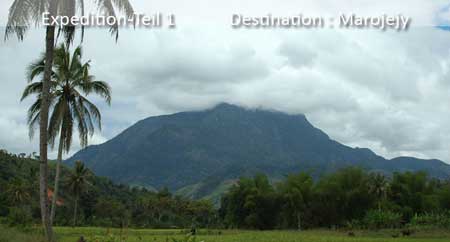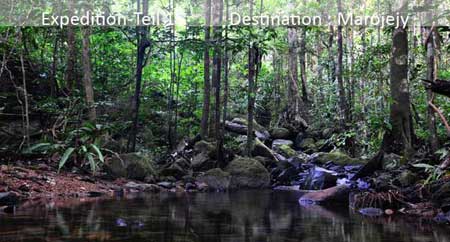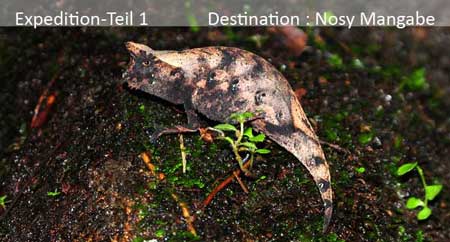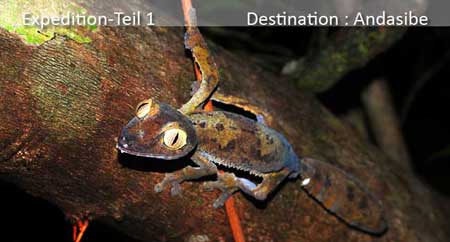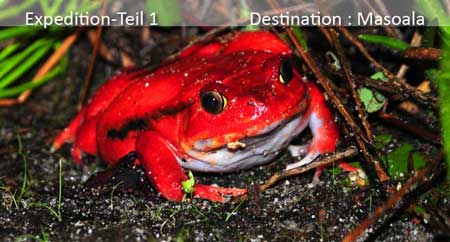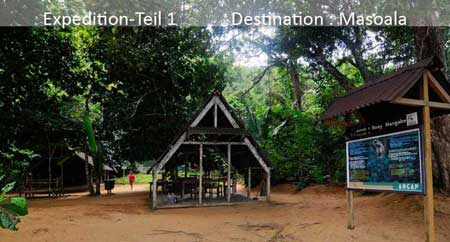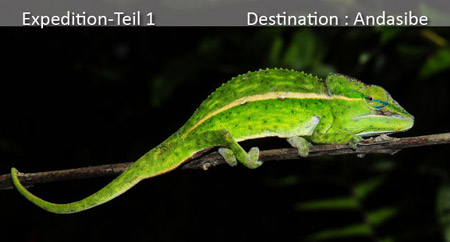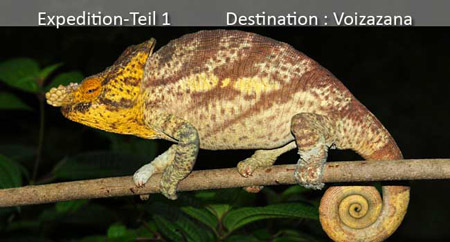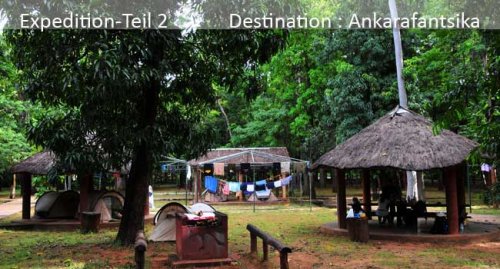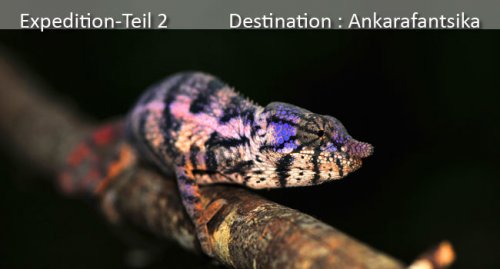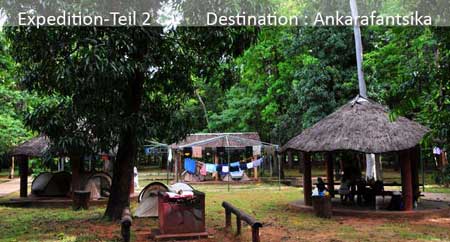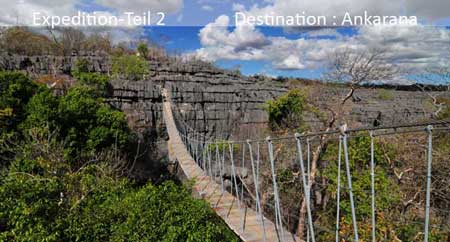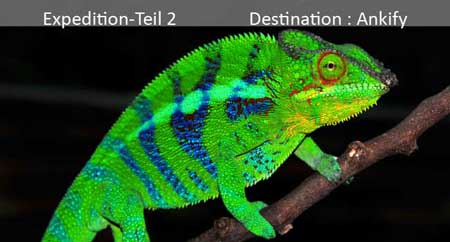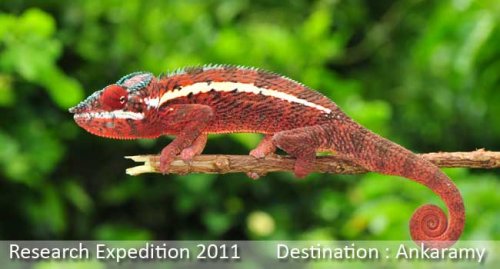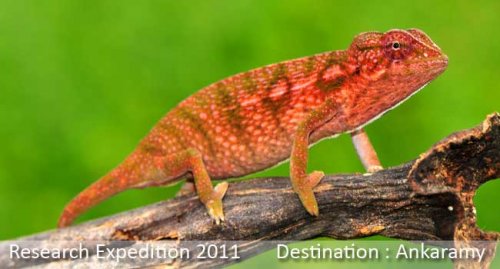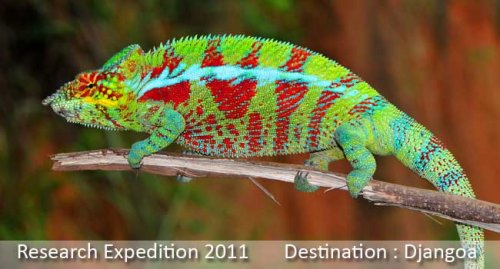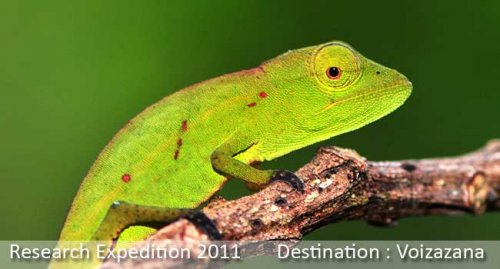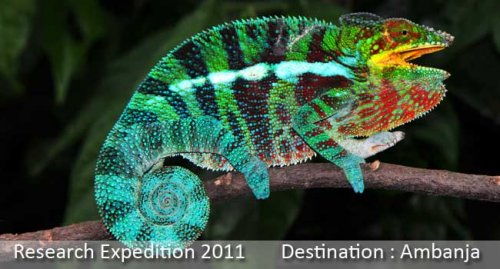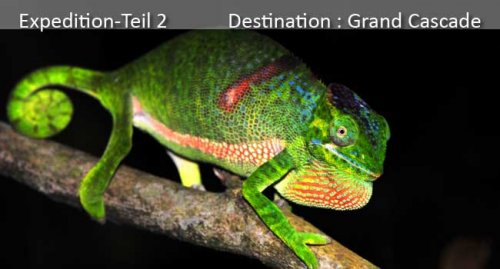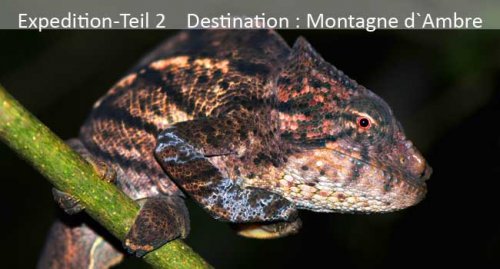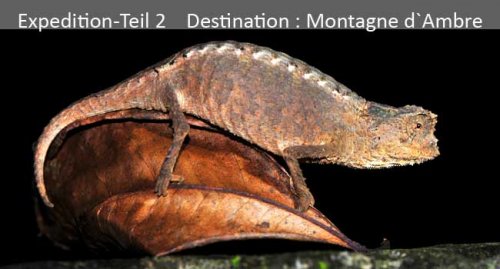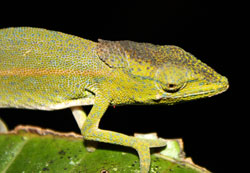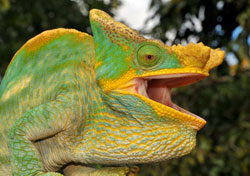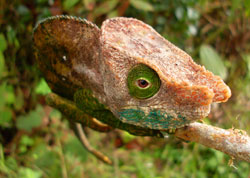Herpeto-Research Expedition 2011
Madagascar took own paths in the evolution for millions of years and also accommodated over 80% Endemism a singular Flora and fauna. The many recent discoveries within the range of the reptiles encouraged us in March 2008 to pure reptiles and amphibians a route. Also in the year 2009 we accomplished a pure reptile route. The Hot spots of both expeditions we seized „the Herpeto Research expedition” to a large route together . This complete journey takes 6 weeks, and is divided into two three-week Parts, since most people do not get 6 weeks vacation. The first part of the journey is occupied with the rare rain forest inhabiting Chameleon-Species and Lizards. The second part of this expedition concerns itself in the emphasis with the color variants of the Panther-Chameleons. Also the rare kinds of the north and the west such as Furcifer timoni and Furcifer angelii represent an important component. The goal of this expedition journey is it as much as possible data to collect around the real attitude conditions to determine. Temperature, air humidity, and the intensity of the sun exposure are considered thereby as the most important data which can be collected. Also GPS data are collected, in order to determine the Habitate of the animals in every detail.
Tourinformations:
http://www.tanalahorizon.com/index.php?id=115
Madagascar took own paths in the evolution for millions of years and also accommodated over 80% Endemism a singular Flora and fauna. The many recent discoveries within the range of the reptiles encouraged us in March 2008 to pure reptiles and amphibians a route. Also in the year 2009 we accomplished a pure reptile route. The Hot spots of both expeditions we seized „the Herpeto Research expedition” to a large route together . This complete journey takes 6 weeks, and is divided into two three-week Parts, since most people do not get 6 weeks vacation. The first part of the journey is occupied with the rare rain forest inhabiting Chameleon-Species and Lizards. The second part of this expedition concerns itself in the emphasis with the color variants of the Panther-Chameleons. Also the rare kinds of the north and the west such as Furcifer timoni and Furcifer angelii represent an important component. The goal of this expedition journey is it as much as possible data to collect around the real attitude conditions to determine. Temperature, air humidity, and the intensity of the sun exposure are considered thereby as the most important data which can be collected. Also GPS data are collected, in order to determine the Habitate of the animals in every detail.
Tourinformations:
http://www.tanalahorizon.com/index.php?id=115

